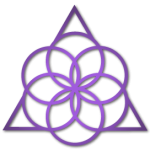My last trip to Bologna and to Italy to offer a yoga training was 8 years ago with Anusara yoga’s ‘community of the heart’. In May of 2018, I returned to Bologna with Desi to introduce a radically new alignment and profoundly different yoga practice to about 40 students of modern postural yoga (MPY), who were largely influenced by Anusara yoga and martial arts. We were invited to Italy by Tommaso Patella, a black belt Aikido martial arts and yoga teacher in Bologna, and by his sister, Lucia Patella from Castellaneta, the heel of Italy’s geographical boot. Both Tommaso and Lucia previously trained 3 times with Spanish Bowspring teacher, Montse Fernandez on the basics of the Bowspring, and they wanted to help spread the new alignments by hosting me and Desi in Bologna.Most of the Italian students, who were brand new to the Bowspring, were sweet, with kind hearts, willing to try a different way of practicing yoga. They didn’t complain in the workshop classes when having trouble with “toes down, glutes up”, “circumferentially expand your ribcage”, instead of ‘melting their hearts’. However, the Anusara UPAs (Universal Principles of Alignment) and the standard model of alignment, which is same for 20th century fitness, yoga, dance, pilates and martial arts were deeply engrained in the students’ postures, and so it was understandably challenging for them to try to go in the opposite directions from what I taught them and the senior teachers for 15 years. Inadvertently, toes and finger tips would lift, and upper backs would deflate. Other default alignments of the standard model of alignments that are unconsciously conditioned and deeply habituated in the experienced yogi include, pressing the shoulders back and down, bending the elbows back and in toward the base ribs, ‘flointing’ the feet (flexing and spreading the toes, while pointing the ankle), disengaging the back of the knee with hyperextension, drawing the chin back and in, and of course, scooping the butt down!After presenting our first Bowspring class in Bologna on Friday, we asked some of the students what they thought of our new mind-body method. One student replied that Bowspring didn’t seem so new since other international yoga teachers – all former students of mine from Anusara – had come to Italy recently to teach similar alignments. When we further inquired with other students who had taken those workshops, we understood a few former Anusara senior teachers have abandoned main elements of the UPAs and are now teaching some of the new paradigm alignments — filling up the upper back with the breath, untucking the tail, and activating the posterior chain of myofascia by pressing the head back. One senior Italian teacher wrote me this week that there is an intention among some of the Anusara teachers to move away from the UPAs and to evolve toward the new paradigm of alignment that embraces more curviness and springiness, since they recognize that there are significant long-term issues with the linear, compressive structure model of static yoga posture. (when you completely change the alignment of a yoga school from the old to the new paradigm, do you keep the same tradename?)Although some of the students had been introduced to some of the new alignment ideas by visiting international teachers, the default habituated alignments of melted upper backs, toes up, glutes down, bellies short, and chins down were deeply engrained. So, Desi and I went slow with the basic katas so that the students hadtime to calmly choose completely opposite alignments to what they had been previously taught as correct. Going slow and mindfully gave them a better chance not to revert to the automatic pilot program, which would turn-on every time we introduced a pose or transition, and especially in common movements (walking around the room, standing, and getting up and down from the floor) that they had never tried or even seen before.After 12 hours of introductory lessons and practices of the Bowspring, students gained a profound new alignment concept, an awareness of their unconscious postural patterns, and also the inspiration to release attachments to old stories about what is normal while embodying what is natural with an open willingness. Italians are one of the most emotionally expressive cultures in the world, and Desi and I were blessed after the classes with loving hugs and kisses by some of the affectionate students.The seeds of the Bowspring are now planted in Italy, and Tommaso will continue to integrate more Bowspring into his yoga classes, and is planning to sponsor future Bowspring workshops in Italy.
Bowspring Meets the Italian Yoga World

